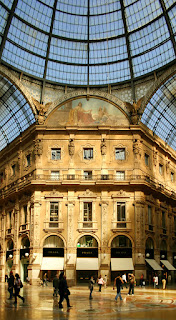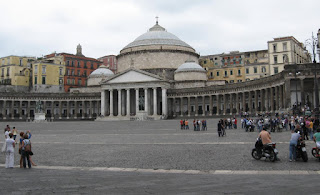Grand Duke of Tuscany maintained family tradition
 |
| Cosimo II de' Medici |
His health was never good and he died from tuberculosis aged only 30 yet made his mark by maintaining the Medici family tradition for patronage by supporting the astronomer and physicist Galileo Galilei.
Galileo, from Pisa, had been Cosimo's childhood tutor during the time that he was Professor of Mathematics at the University of Padua.
From the beginnings of the Medici dynasty, with Cosimo the Elder's rise to power in 1434, the family supported the arts and humanities, turning Florence into what became known as the cradle of the Renaissance.
Cosimo the Elder gave his patronage to artists such as Ghiberti, Brunelleschi, Donatello and Fra Angelico. His grandson, Lorenzo the Magnificent, supported the work of such Renaissance masters as Botticelli, Leonardo da Vinci and Michelangelo.
Galileo, who also had the patronage of Cosimo's eldest son and heir, Ferdinando II de' Medici, dedicated his treatise Sidereus Nuncius, an account of his telescopic discoveries, to Cosimo. Additionally, Galileo christened the moons of Jupiter the 'Medicean stars'.
Cosimo II was the elder son of Ferdinando I de' Medici, the third Grand Duke of Tuscany, and Christina of Lorraine. Ferdinando arranged for him to marry Archduchess Maria Maddalena of Austria, daughter of Archduke Charles II, in 1608. Together they had eight children, among whom was Cosimo's eventual successor, Ferdinando II, an Archduchess of Inner Austria, a Duchess of Parma and two cardinals.
After he died at the family home at the Palazzo Pitti in Florence, in 1621, the power of Florence and Tuscany began a slow decline. When the last Medici grand duke, Gian Gastone, died without a male heir in 1737, the family dynasty died with him.
 |
| The facade of the Palazzo Pitti in Florence, former family home of the Medici dynasty |
The Palazzo Pitti, known in English as the Pitti Palace, is situated on the south side of the River Arno, a short distance from the Ponte Vecchio. It was originally the home of Luca Pitti, a Florentine banker, and was bought by the Medici family in 1549, after which it became the chief residence of the ruling families of the Grand Duchy of Tuscany. It is now the largest museum complex in Florence, housing eight museums and galleries.
Travel tip:
The Museo Galileo in Florence is in Piazza dei Giudici close to the Uffizi Gallery. It houses one of the biggest collections of scientific instruments in the world in Palazzo Castellani, an 11th century building.
More reading:
Galileo Galilei, the founder of modern science
Grand designs of Cosimo I
Medici patronage behind invention of piano
Home






